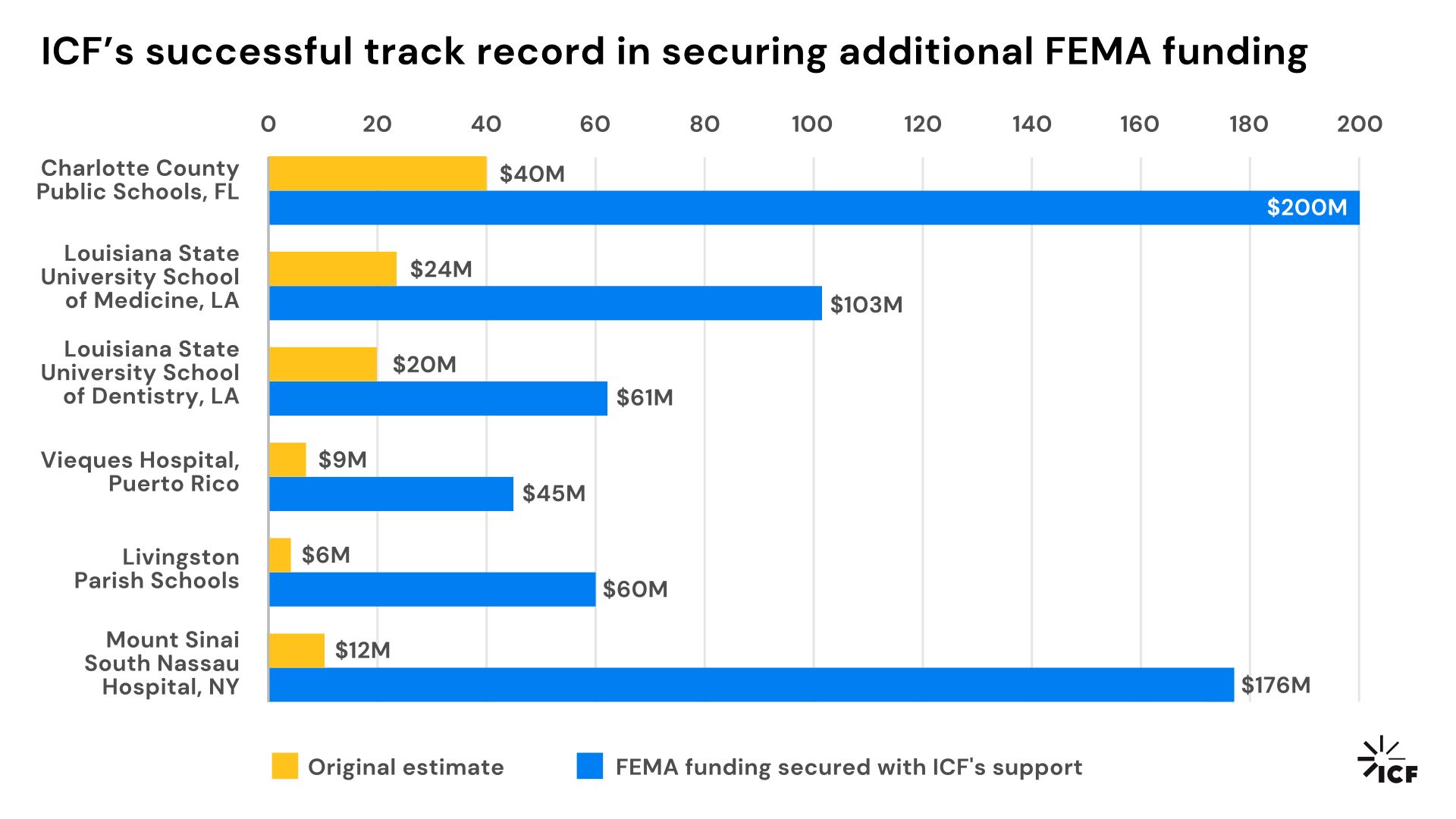FEMA Public Assistance services
Your disaster recovery specialists
ICF offers vital support to state, tribal, territorial, and local governments—as well schools and publicly-owned utilities—in navigating FEMA’s Public Assistance (PA) Program to respond and recover after Presidentially declared disasters.
Our approach
Our disaster recovery team understands the FEMA Public Assistance grant process and helps our clients formulate projects and manage the resultant grants. Bringing cutting-edge technology like drones and 3D modeling along with our deep expertise in FEMA PA, ICF addresses all aspects of recovery to ensure that communities not only rebuild but are better prepared for whatever comes next.
While the process of securing reimbursement from FEMA PA grant is often challenging and time-consuming, ICF experts bring deep expertise to guide you through the grant process to ensure that your community gets and keeps the funding it needs to recover compliantly. In fact, we often secure more funding for our clients than FEMA’s original estimates.


Enabling recovery
- Damage assessment and documentation
- Data management and reporting
- Project formulation
- Damage descriptions and dimensions (DDD)
- Project development and management
- 406 Hazard Mitigation and floodplain management
- Environmental and Historic Preservation (EHP)
- Risk management and insurance
- Project reimbursement
- Project closeout
Our work